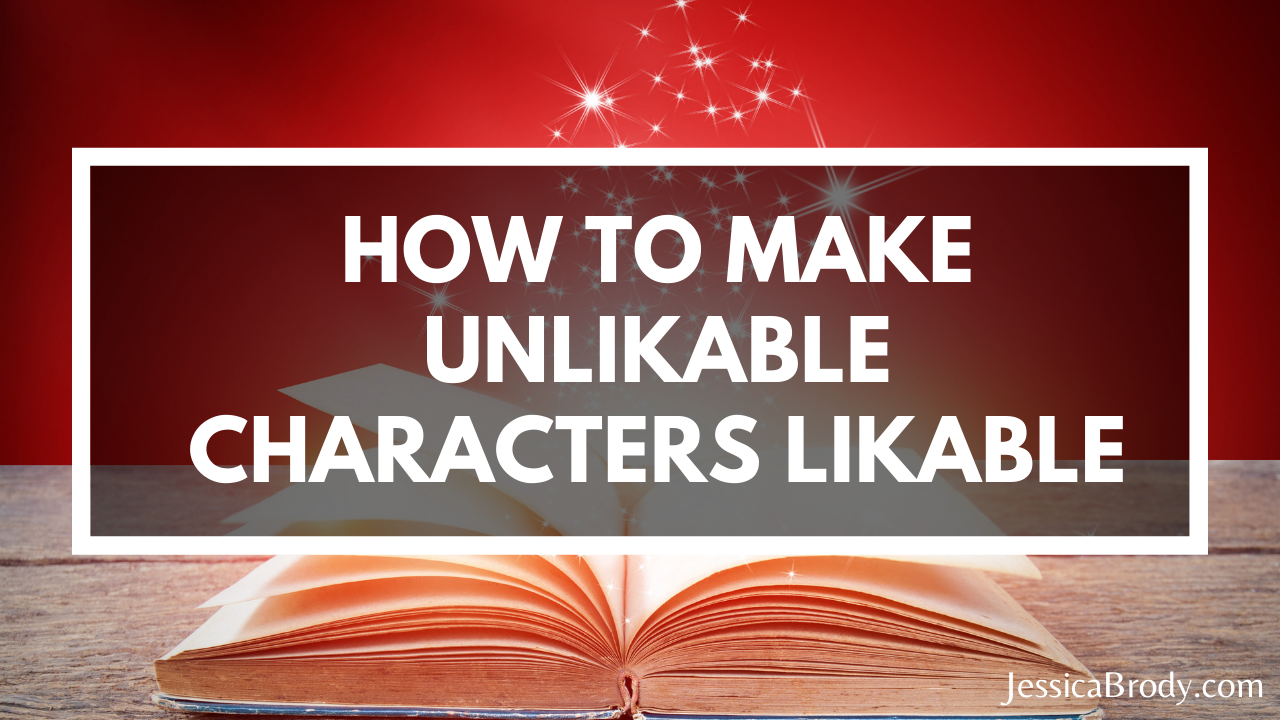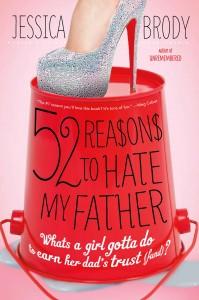How to Make Unlikable Characters Likable (3 Strategies with Examples)

How do you make unlikable characters more likeable? Or at the very least more relatable?
Great question. In this blog post, I’ll break down three actionable strategies for taking even the most unlikable characters and making your audience root for them. But first, let’s talk about why you’d want to do this.
First of all, it’s a common misconception that all main characters (or heroes) have to be “likeable.” When we hear the term “likeable” we automatically think, “nice.” And heroes don’t always have to be nice. They don’t always have to come off as “good” or “kind” or “virtuous.”
Some of the most memorable characters in fiction are anything but.
However, you do have to make your character worth reading about. Otherwise, readers will give up within a few pages and then all your word work crafting this unique, interesting, complex character goes right out the window.
It’s true that readers might find it easier to relate to “likable” heroes, but unlikable heroes can easily grasp a reader’s attention too. We just have to work a little harder to do it.
So, let’s look at three strategies for doing just that (with examples!)
Strategy #1: Give your hero one redeeming quality or action (even if it’s small) at the beginning of the story
If this strategy sounds familiar it’s because it also goes by a very specific name: “Save the Cat!”
In his popular screenwriting book, Save the Cat!, Blake Snyder coined this technique. He says, when you have an unlikable hero, you have to devise a way for them to something redeemable (preferably toward the beginning of the story) so the audience will get behind the hero. In other words, your hero has to “save a cat.”
It’s not literal advice. You don’t actually write a literal cat in distress into your story. It’s a metaphor for any redeemable action that your hero performs or redeemable quality that they possess.
I also use this same advice in my novel-writing adaptations of the book, Save the Cat! Writes a Novel and Save the Cat! Writes a Young Adult Novel.
Let’s look at some examples of “Save the Cat!” in action.
 In The King’s Speech there’s a scene in the movie’s first act in which George (soon to be King George) stops what he’s doing long enough to tell a story to his adorable little daughters (who clearly could care less about his debilitating stutter). Up until this point, he comes off as kind of a bit arrogant, spoiled, and cold. But after this endearing scene with this daughters, we’re instantly on his side.
In The King’s Speech there’s a scene in the movie’s first act in which George (soon to be King George) stops what he’s doing long enough to tell a story to his adorable little daughters (who clearly could care less about his debilitating stutter). Up until this point, he comes off as kind of a bit arrogant, spoiled, and cold. But after this endearing scene with this daughters, we’re instantly on his side.
 In The Hunger Games book, author Suzanne Collins puts a unique twist on the strategy. Katniss actually continually threatens to kill the cat who lives with her family. He’s an extra mouth to feed and they just don’t have enough food. This would presumably make her unlikable (she wants to kill the cat!) But because her sister is so attached to that cat and cares about him so much, Katniss doesn’t kill the cat. She continually decides to spare the cat’s life (saving him!) because of her love for her sister. This effectively endears us to her (while also helping us understand more about what’s most important to Katniss: her family).
In The Hunger Games book, author Suzanne Collins puts a unique twist on the strategy. Katniss actually continually threatens to kill the cat who lives with her family. He’s an extra mouth to feed and they just don’t have enough food. This would presumably make her unlikable (she wants to kill the cat!) But because her sister is so attached to that cat and cares about him so much, Katniss doesn’t kill the cat. She continually decides to spare the cat’s life (saving him!) because of her love for her sister. This effectively endears us to her (while also helping us understand more about what’s most important to Katniss: her family).
I actually use the Save the Cat! strategy in my own novel 52 Reasons to Hate My Father.
At the start of the story, my hero, Lexington Larrabee, is a spoiled heiress who has no concept of reality, consequences, or how regular people live. That, of course, is the whole point of the book. I wanted to tell a story in which the hero has a drastic character arc. And the only way to do that effectively was to bring her as far back as I could. Make her really bratty, really spoiled, really clueless. But, that of course, led me to the problem of also making her likable. How do you root someone who’s so out of touch?
I chose to make Lexington’s dog her “Save the Cat,” moment. She’s very attached to her dog and she considers the dog to be her one true friend. But instead of making the dog some designer purebred that Lexi carries around like an accessory, I chose to make the dog a rescue. Toward the very beginning of the story, Lexi talks about how she rescued her dog from a busted evil puppy mill, which hopefully gives Lexi a tiny bit redemption in the reader’s eyes.
Want more examples? Check out my blog post: “5 More Ways to Save the Cat!”
Strategy #2: Give your hero an enemy…a really evil one.
One of the best ways to make a reader sympathize with an unlikable character is to have an even more unlikable character to compare them to. Enter: the villain! But remember villains don’t always have to be evil monsters in capes. They can be regular people. If it’s someone who is immediately pitted against the protagonist from the beginning and we, the reader, can see how awful this person is, it will instantly make your hero more relatable and likable. Because don’t we all have that special someone in our life who we just can’t stand? Who is just out to get us? So as soon as you introduce that person in your hero’s life, your reader will feel bonded with the hero. Regardless of how likable or unlikable the hero is.
Here are some examples of this strategy done well:
 The movie, Bruce Almighty, is still one of my all-time favorites. Although we all love Jim Carrey as an actor, let’s face it, his character in this flick is not instantly likable. Yes, he’s funny. But he’s also a bit of whiner. He’s insensitive, self-centered, and blind to the fact that Jennifer Aniston (his girlfriend) is amazing. The result being: he doesn’t treat her with the respect she deserves. He’s not exactly someone we immediately root for. That is, until we meet…Evan. Played so brilliantly by Steve Carell. Evan is even worse than Bruce! He’s arrogant and mean and we instantly despise him! Because Evan and Bruce are established as nemesis, we instinctively root for Bruce to beat him. What a clever trick!
The movie, Bruce Almighty, is still one of my all-time favorites. Although we all love Jim Carrey as an actor, let’s face it, his character in this flick is not instantly likable. Yes, he’s funny. But he’s also a bit of whiner. He’s insensitive, self-centered, and blind to the fact that Jennifer Aniston (his girlfriend) is amazing. The result being: he doesn’t treat her with the respect she deserves. He’s not exactly someone we immediately root for. That is, until we meet…Evan. Played so brilliantly by Steve Carell. Evan is even worse than Bruce! He’s arrogant and mean and we instantly despise him! Because Evan and Bruce are established as nemesis, we instinctively root for Bruce to beat him. What a clever trick!
 In the novel Eleanor Oliphant is Completely Fine by Gail Honeyman, Eleanor doesn’t immediately come off as a traditionally “likable” character. She’s a bit stand-offish, socially awkward, isolated, and has a difficult time connecting with people. Eventually, we learn why but at first, we have to just go with it. What keeps us turning pages and invested in Eleanor’s story? Many things, but one of them is the author’s clever use of her colleagues at work. They go out of their way to avoid Eleanor and make fun of her behind her back. In fact, the ridicule is so cleverly done that due to her inability to read social situations, sometimes Eleanor herself doesn’t even know it’s happening. The sympathy we feel for Eleanor in these moments makes us root for her and want to keep reading about her.
In the novel Eleanor Oliphant is Completely Fine by Gail Honeyman, Eleanor doesn’t immediately come off as a traditionally “likable” character. She’s a bit stand-offish, socially awkward, isolated, and has a difficult time connecting with people. Eventually, we learn why but at first, we have to just go with it. What keeps us turning pages and invested in Eleanor’s story? Many things, but one of them is the author’s clever use of her colleagues at work. They go out of their way to avoid Eleanor and make fun of her behind her back. In fact, the ridicule is so cleverly done that due to her inability to read social situations, sometimes Eleanor herself doesn’t even know it’s happening. The sympathy we feel for Eleanor in these moments makes us root for her and want to keep reading about her.
 My co-author and I employed this strategy in our sci-fi novel, Sky Without Stars, which is a reimagining of Victor Hugo’s Les Misérables, set on a distant planet. Our main character, Chatine Renard is a thief. In the very first scene she’s shown stealing from a marketplace stall and outrunning the police droids that roam the streets. Not exactly a super likable thing to do. But where does she go after that? Straight home to her awful, horrible, depraved parents (based on the Thenardiers of Les Mis) who mistreat her terribly and steal from her! Suddenly, Chatine’s looking a lot more likable in comparison. But perhaps more important than liking her is now we understand her better.
My co-author and I employed this strategy in our sci-fi novel, Sky Without Stars, which is a reimagining of Victor Hugo’s Les Misérables, set on a distant planet. Our main character, Chatine Renard is a thief. In the very first scene she’s shown stealing from a marketplace stall and outrunning the police droids that roam the streets. Not exactly a super likable thing to do. But where does she go after that? Straight home to her awful, horrible, depraved parents (based on the Thenardiers of Les Mis) who mistreat her terribly and steal from her! Suddenly, Chatine’s looking a lot more likable in comparison. But perhaps more important than liking her is now we understand her better.

Strategy #3: Make us “love to hate” them
This strategy is probably the toughest one of the three to implement, because it requires the most creativity, and it can also backfire if not done carefully.
Essentially there are numerous reasons we love to hate certain characters. And it’s often hard to pinpoint why we love to hate them. I think the trick is to find a unique flaw or skill about your character that you can exploit and/or exaggerate to the point of comedy, ridicule, or fascination.
 One of the most well-known examples of this is Sherlock Holmes, a character who is certainly not known for his “likeability.” But isn’t he so dang fascinating? Why? Because he’s so dang smart. Sometimes too smart. His wits and cleverness are so exaggerated that we develop a sort of love/hate relationship with them…and as a result him. We love watching him outsmart the criminals, but we hate watching him treat others coldly. Yet, it’s the same trait that accomplishes both. It’s his greatest skill and his greatest flaw.
One of the most well-known examples of this is Sherlock Holmes, a character who is certainly not known for his “likeability.” But isn’t he so dang fascinating? Why? Because he’s so dang smart. Sometimes too smart. His wits and cleverness are so exaggerated that we develop a sort of love/hate relationship with them…and as a result him. We love watching him outsmart the criminals, but we hate watching him treat others coldly. Yet, it’s the same trait that accomplishes both. It’s his greatest skill and his greatest flaw.
 Another example is Barney Stinson from the show How I Met Your Mother. Who on earth doesn’t love Barney Stinson!? But why on earth do we love him? We have every reason not to! He’s a narcissistic womanizer. He lies to girls in hideous ways to seduce them. Under any other circumstances, we would despise a character like that. So why do we love to hate him? Because his flaw is so exaggerated…to the point of comedy. He doesn’t pick up women in the normal clichéd way with cheesy pick up lines. He has a whole “playbook” full of creative ways to pick up women. It’s ridiculous…yet entertaining. And we both love it and hate it at the same time.
Another example is Barney Stinson from the show How I Met Your Mother. Who on earth doesn’t love Barney Stinson!? But why on earth do we love him? We have every reason not to! He’s a narcissistic womanizer. He lies to girls in hideous ways to seduce them. Under any other circumstances, we would despise a character like that. So why do we love to hate him? Because his flaw is so exaggerated…to the point of comedy. He doesn’t pick up women in the normal clichéd way with cheesy pick up lines. He has a whole “playbook” full of creative ways to pick up women. It’s ridiculous…yet entertaining. And we both love it and hate it at the same time.
I also attempted to use this strategy in 52 Reasons to Hate My Father. Instead of trying to downplay Lexi’s spoiled “brattiness,” I decided to lean into it, make it so over the top that it became comical. Her remarks are so out of touch with reality, you can’t help but shake your head and laugh…and then hopefully keep reading. You hate how spoiled she is, but hopefully can’t wait to see what she does next.
So there, you have it. Three strategies on making unlikable characters likable, or at least more relatable. Try one out in your current work in progress, or in a writing prompt.
Happy writing!
Filed under: Tips for Writers Tagged with: 52 Reasons to Hate My Father bruce almighty desperate housewives elementary harry potter how I met your mother legally blonde save the cat STC Starter Kit (LMAP) the hunger games the king's speech villains writing tips
-->